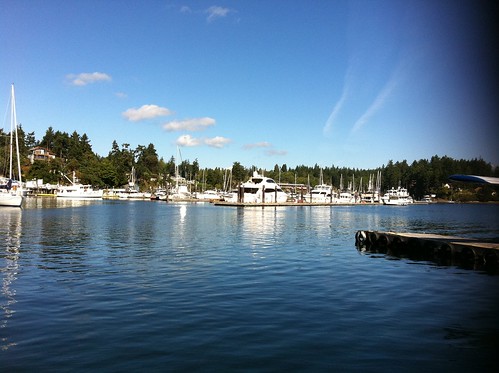I had lunch with my Dad two weekends ago (my Dad is a lawyer and he has taught law as well, so his background is also academic) and he started asking me why had I chosen the academic path that I have in the past few years. Dad seemed especially fascinated by my interest in wastewater. After all, I started my professional life even before I finished my undergraduate degree in chemical engineering, as a research assistant undertaking bench-scale experiments on aerobic wastewater treatment processes. I have been fascinated by pollution and solving contamination problems since I was very young. I always wanted to clean up our world.
As time has gone by and I have matured as a scholar, I have searched for, and found ways to make my research more accessible to the general public. Beyond publishing in open-access journals and sharing tidbits of my research on my scholarly blog and on my social media outlets (being a public intellectual as much as I can), I also give talks that are intended for the average civilian. One of those talks, which I titled “Saving the world, one drop at a time” uses statistics (usually taken from the World Water Assessment Programme or from the UN-Water site, or from the WHO-UNICEF Joint Monitoring Programme, although I just came across Water.org‘s very accessible site) to provide a snapshot of just the sheer size of the problem. Obviously, I admit that I do this to scare people into action.
The sheer size of the water and sanitation problem should scare us all. It is just bewildering to me how in some regions more people can have access to a mobile phone than access to a toilet. Over a billion people engage in open defecation. Even worse, according to the JMP (full 2012 report in PDF):
Open defecation rates have decreased from 25% in 1990 to 15% in 2010. Worldwide, 1.1 billion people practise open defecation, a decline of 271 million since 1990.
Lack of water access and low levels of sanitation also have a negative impact on women and children.
In just one day, it is estimated that more than 152 million hours of women and girls’ time is consumed for the most basic of human needs — collecting water for domestic use
While my scholarship may not have the highest impact on how water is governed worldwide, at least I’m working towards bettering our understanding of water governance, in hopes that at least *some* communities can have access to improved water and sanitation. Even if I can improve the lives of a few people, at least my research has had *some* degree of impact.




Dear Dr. Pacheco-Vega,
I stumbled upon your blog by happenstance and took some time to read a number of the posts. I am a plumbing engineer with more than 30-years experience, and share your interest in water and sanitation. Some years ago I read about the 19th century development of the water-carriage method for removing human excreta in cities. Previous to this, disposal of human waste (although haphazard) was often by direct burial in the ground where bacteria found naturally in the soil could break it down. I realized that the development of the “modern” water-carriage system, along with subsequent sewage treatment methods was the reverse of what we should be doing. This fascinated me since I also am a bible student and am familiar with the sanitary regulations of the Mosaic Law found at Deuteronomy 23: 11-13 and Leviticus 17:13 in the bible that served as a protection against febrile diseases. Jeremiah 10:23